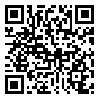BibTeX | RIS | EndNote | Medlars | ProCite | Reference Manager | RefWorks
Send citation to:
URL: http://sjsph.tums.ac.ir/article-1-93-en.html
Background and Aim: Today in many work environments, such as nuclear, military and chemical industries, human errors may result in disasters. Accidents in different parts of the world bear evidence to this examples are the Chernobyl disaster (1986), the Three Mile Island accident (1974), and the Flixborough explosion (1974). Thus, identification of human error, especially in complex and intricate systems, and devising control measures are essential.
Materials and Methods: This project was a case study conducted in Zagross Methanol Company in Asalouye (South Pars), Iran. The walking-talking-through method was used to collect the required data and complete the Systematic Human Error Reductive and Predictive Approach (SHERPA) worksheets. The process experts and control room operators were interviewed and technical documents of the Company examined.
Results: Analysis of the SHERPA worksheets indicated that the majority (48.62%) of the 222 errors identified were action errors, followed by checking errors (31.97%), retrieval errors (6.75%), selection errors (0.9%), and communication errors (11.7%).
Conclusion: The results of this study show that the method can be used effectively in different industries, especially chemical industries, to identify human errors that may potentially lead to dangerous situations and accidents.
Received: 2009/11/22 | Accepted: 2010/02/16 | Published: 2013/09/30
| Rights and permissions | |
 |
This work is licensed under a Creative Commons Attribution-NonCommercial 4.0 International License. |





